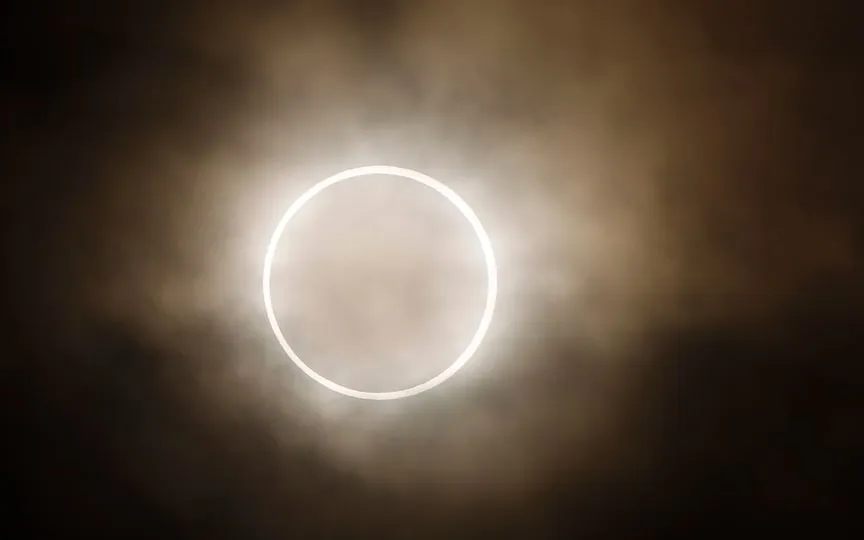Preparing for a Spectacular ‘Ring of Fire’ Eclipse in the Western Hemisphere
An annular solar eclipse awaits skywatchers throughout the Americas on Saturday, providing them with a delightful celestial spectacle.
These occur when the Moon passes between the Sun and the Earth at the furthest point from our planet. Because it is so far away, it does not completely cover the Sun, creating a “ring of fire” effect.
In the U.S., the most prominent “tire trail” crosses a handful of major cities, including Eugene, Oregon, Alburquerque, New Mexico, and San Antonio, Texas, from 9:15 a.m. to 11:50 a.m. local time. According to NASA, the time zones where the partial eclipse phases last an hour or two before and after.
In any location, it is visible for 30 seconds to five minutes, but people are advised to take safety precautions and wear sunglasses and never regular sunglasses to preserve vision.
“DO NOT look at the sun through a camera lens, telescope, binoculars, or any other optical device when wearing eclipse glasses or using a handheld solar viewer—the concentrated sun’s rays will burn through the filter and cause serious eye damage,” says NASA.
We are now on WhatsApp. Click to join.
Next, it crosses Mexico and Central America, then into South America through Colombia and northern Brazil before ending at sunset in the Atlantic Ocean.
NASA is also planning a live broadcast at nasa.gov/nasatv/ for those not lucky enough to be in the path of this special astronomical transit from 11:30 a.m. to 1:15 p.m. ET (1530-1715 GMT) from Albuquerque. New Mexico as well as Carville, Texas and White Sands New Mexico.
– Audible rockets –
The event also serves as a dress rehearsal before the total eclipse set for April 2024.
Both eclipses will be “absolutely breathtaking for science,” said Madhulika Guhathakurta, a researcher in the heliophysics program.
A solar eclipse has a significant effect on the upper atmosphere, such as the ionosphere, which is full of charged particles and is responsible for reflecting and refracting radio waves.
“Although the effects of solar eclipses on the atmosphere have been studied for more than 50 years, many questions remain unresolved,” Guhathakurta said.
To study these effects, NASA will launch three rockets from the White Sands Missile Range in New Mexico to collect data on electric and magnetic fields, electron density and temperature.
A total eclipse occurred in 2017 in the United States. After next April’s total eclipse, the next one will occur in 2044, while the next annular eclipse will be in 2046.
One more thing! ReturnByte is now on WhatsApp channels! Follow us by clicking the link to never miss any updates from the world of technology. Click here to join now!




